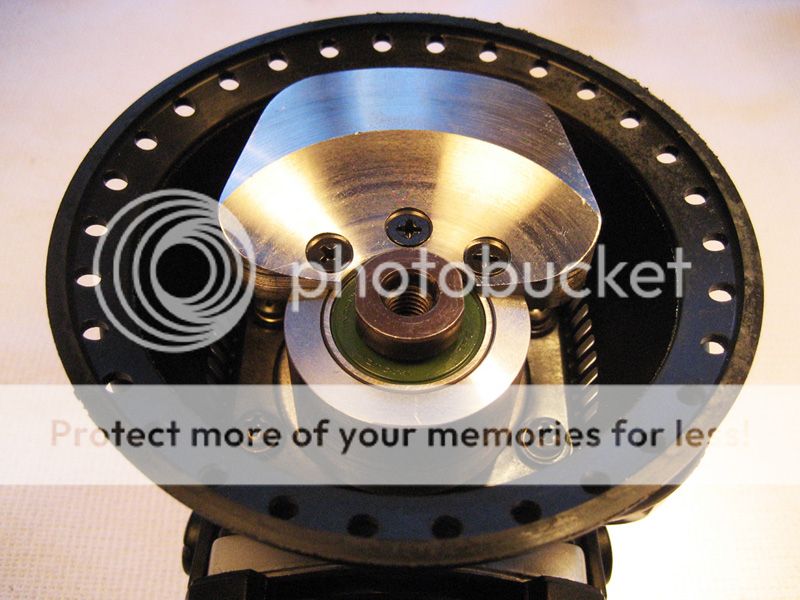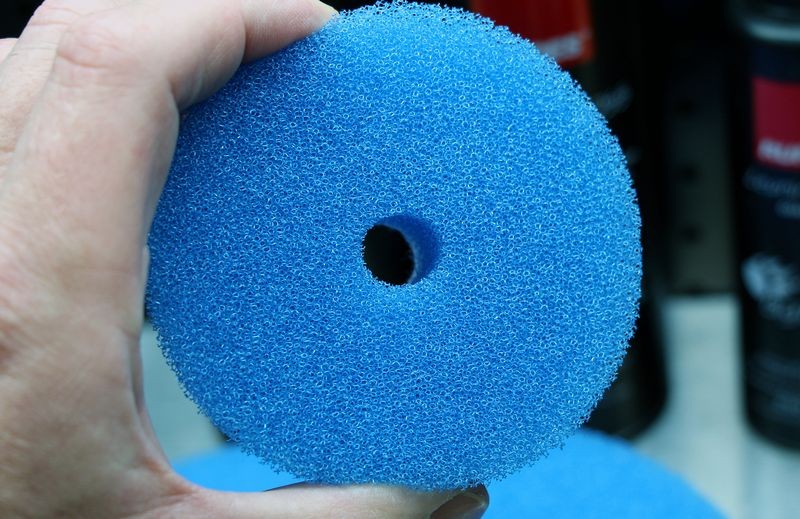Now that several hundred Rupes BigFoot Random Orbital Polishers have invaded the North American market, user feedback is rolling in. For the most part, those that have swapped their hard-earned cash for a BigFoot are ecstatic with its performance.
However, there are some BigFoot owners that are questioning the performance of the machine, primarily when pitted against the Griot's Random Orbital or the Flex XC 3401VRG. Most of the finger pointing seems to lead to an opinion that the BigFoot's motor power is either inadequate or its RPM capability too low. If I'm not mistaken, the primary BigFoot machine being mentioned in the comparisons is the LHR 15ES (125mm/5" backing plate, 15mm-diameter orbit, 4,800-5,000 RPM).
Through my own use of these machines, I have verified that the motor is certainly capable of maintaining constant and adequate speed under load. Further, many of the guys reporting inadequate power or RPM are known to be capable and intelligent chaps.
So... what in the world is going on?!
I believe the reason is rather simple to explain.
Both machines employ a backing plate anti-spin "feature" that slows the rotation of the backing plate via friction:
This feature does have a very useful purpose, which is to slow excessive backing plate rotation in situations where the pad is not under load while the machine is running (either the pad has minimal or no contact with the polishing surface or there is very little friction between the polishing surface and buffing pad). This is done to prevent erratic interaction between the pad and paint surface and to eliminate the chance that the pad will inadvertently scour the surface.
We must also consider that for years now, we've been using machines that create a smaller orbits but deliver higher motor RPM. So right away, there's an expectation that must be overcome when using a BigFoot. Since the stroke is so much larger, there is not necessarily a need to deliver high motor RPM because with a larger stroke comes increased lateral pad motion and an increased ability to create more backing plate rotation.
In other words... with all other things being equal, a large stroke machine will cause the backing plate to spin more rapidly than a small stroke machine. Therefore, to provide a similar polishing result, a large stroke machine does not necessarily need its motor to deliver as high an RPM as a short stroke machine. While I don't expect most guys to ponder design variances and their consequences from one machine to the next... I rather enjoy it!
What is the reason we as detailer's typically increase machine speed?
Is it because we are thinking, "Man, if I could polish the area directly beneath the buffing pad 20 times more per second (equal to an additional 1,200 RPM), the finish on this paint would be perfect!"
Not usually. We can accomplish such a feat by either slowing arm speed or polishing the surface using additional passes. In general (and assuming that the machine is being used intelligently in regards to machine speed settings), we tend to add machine speed in hopes of increasing backing plate rotation. And... should we increase machine speed and end up dissatisfied with the polishing energy or the amount of backing plate rotation being created, many of us will then either add pressure atop the machine or tilt it (or both) in hopes of concentrating machine energy onto a smaller portion of the pad. This typically results in further slowing of the backing plate's rotation. If taken to extremes, the buffing pad may hardly rotate at all (or may stall altogether).
I believe that this is the primary reason some guys believe that the BigFoot's motor power is inadequate, when in fact the motor is delivering a more than adequate amount of power.
Polishing Methodology.
If two guys are handed identically prepared machines using identical liquids & pads AND they are told to use an identical speed setting... they may very well end up with a different polishing result.
Without getting overly technical, by comparison the two users of the machines may:
• Use more or less buffing liquid
• Use more or less applied pressure
• Use more or less machine tilt
• Spend more or less time polishing
Polishing results become much more difficult to control when the system set forth by a manufacturer is modified. Whereas the BigFoot machine (with its anti-spin technology) may deliver ample backing plate rotation when used with the BigFoot brand of pads and liquids (which were developed exclusively for use with the BigFoot), it may deliver substandard performance when used with the Meguiar's DA Microfiber System.
In the case of the aforementioned system, a tremendous amount of friction can be generated between the polishing disc and paint surface because the disc's microfiber face features an astonishing amount of surface contact. If the disc is then thoroughly primed with the abrasive-laden Meguiar's DA Microfiber Cutting Compound, there is sure to be much more friction and drag created compared to a Rupes BigFoot Blue Foam Cutting Pad that has been sprinkled with a few drops of Rupes BigFoot Zephir Coarse Cutting Gel.
Time to even the playing field!
By simply placing a spacer between the backing plate and the machine's backing plate mounting pad, the anti-spin feature is disengaged. The machine will then deliver increased backing plate rotation, which may help to increase cutting speed and deliver improved polishing results. This was covered in another article, which can be found here. Here are some photos taken from the article that outline the process:
A metal, plastic, or phenolic washer will work. Grind, cut or sand to size.
The height of the spacer needs to be enough so that the backing plate will no longer contact Bigfoot’s shroud. The spacer shown is approximately 3/16” tall and was taken from a backing plate featuring a 5/16”-24 mounting stud.
The spacer was placed between the backing plate and mounting pad.

The pad still mounts safely and securely. If desired, a minimally longer bolt can be installed to compensate.
The bolt is 8mm, and the shape of the platform & spacer is known as a Double-D Cutout.
The resultant gap is nearly unnoticeable.
With the spacer installed, backing plate rotation and cutting speed were dramatically increased.
The difference was apparent, even when low speed settings were used.
Will this temporary modification void the machine's warranty?
I have verified through Francesco Ginocchio, Marketing Manager at Rupes S.p.A. that the warranty will remain intact. The wonderful Technicians and Engineers at Rupes hold firm in their belief that this modification is not necessary or beneficial in the chase for increased performance. Further, we both agree (Rupes and I) that with an increase in backing plate rotation comes a potential for loss of high RPM stability. Therefore, if you wish to temporarily or permanently try this modification...
PAY ATTENTION WHILE OPERATING THE MACHINE.
No message texting or brushing of your teeth while operating the UNLEASHED BIGFOOT BEAST!!!
Thanks for reading, best of luck!












 Thanks:
Thanks:  Likes:
Likes:  Dislikes:
Dislikes: 

 Reply With Quote
Reply With Quote











Bookmarks